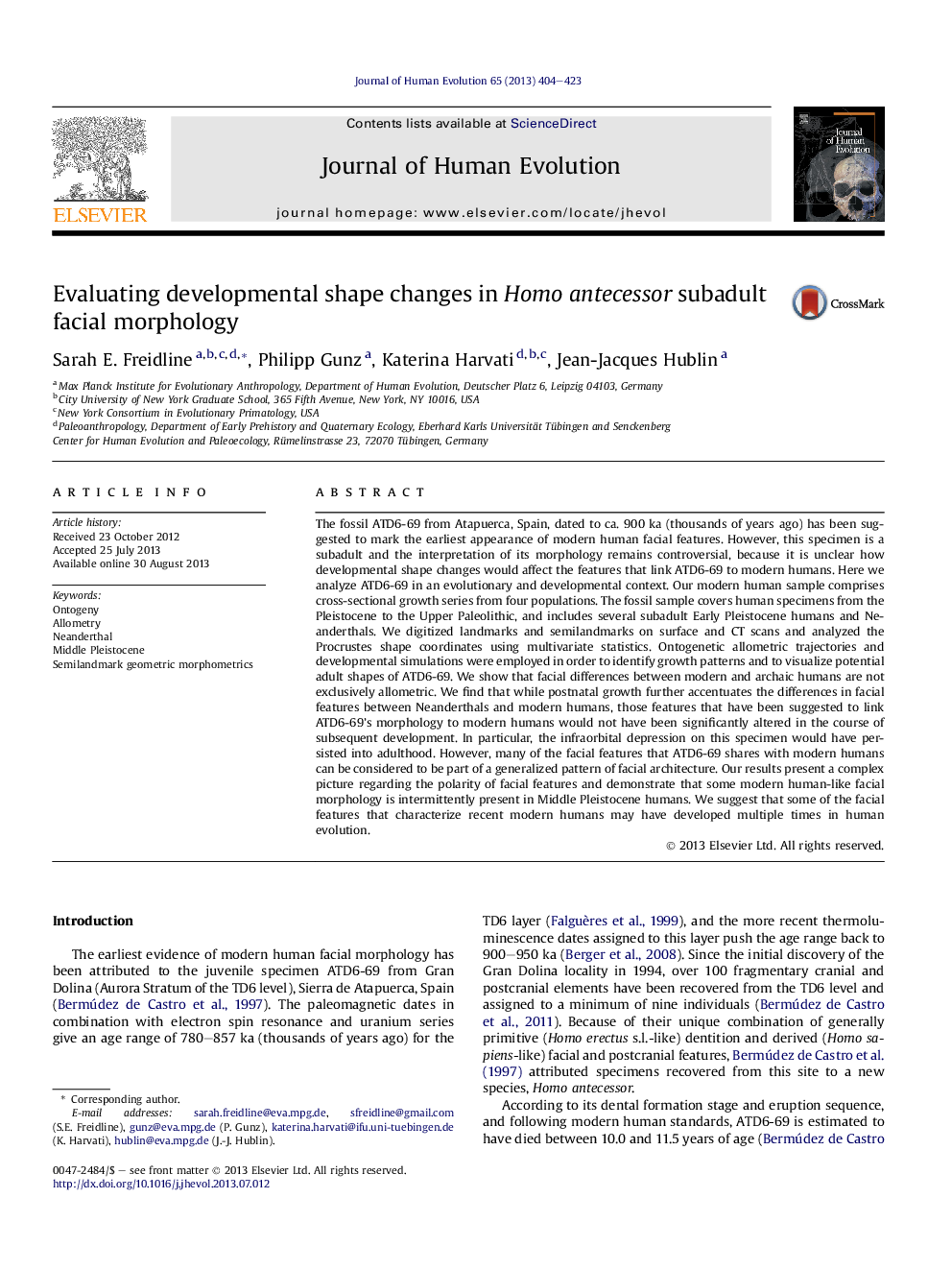| کد مقاله | کد نشریه | سال انتشار | مقاله انگلیسی | نسخه تمام متن |
|---|---|---|---|---|
| 4556149 | 1329456 | 2013 | 20 صفحه PDF | دانلود رایگان |

The fossil ATD6-69 from Atapuerca, Spain, dated to ca. 900 ka (thousands of years ago) has been suggested to mark the earliest appearance of modern human facial features. However, this specimen is a subadult and the interpretation of its morphology remains controversial, because it is unclear how developmental shape changes would affect the features that link ATD6-69 to modern humans. Here we analyze ATD6-69 in an evolutionary and developmental context. Our modern human sample comprises cross-sectional growth series from four populations. The fossil sample covers human specimens from the Pleistocene to the Upper Paleolithic, and includes several subadult Early Pleistocene humans and Neanderthals. We digitized landmarks and semilandmarks on surface and CT scans and analyzed the Procrustes shape coordinates using multivariate statistics. Ontogenetic allometric trajectories and developmental simulations were employed in order to identify growth patterns and to visualize potential adult shapes of ATD6-69. We show that facial differences between modern and archaic humans are not exclusively allometric. We find that while postnatal growth further accentuates the differences in facial features between Neanderthals and modern humans, those features that have been suggested to link ATD6-69's morphology to modern humans would not have been significantly altered in the course of subsequent development. In particular, the infraorbital depression on this specimen would have persisted into adulthood. However, many of the facial features that ATD6-69 shares with modern humans can be considered to be part of a generalized pattern of facial architecture. Our results present a complex picture regarding the polarity of facial features and demonstrate that some modern human-like facial morphology is intermittently present in Middle Pleistocene humans. We suggest that some of the facial features that characterize recent modern humans may have developed multiple times in human evolution.
Journal: Journal of Human Evolution - Volume 65, Issue 4, October 2013, Pages 404–423